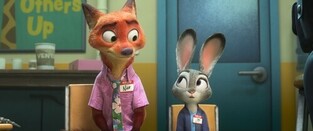 |
| ▲ This photo, shows a oriental dollarbird. (Yonhap) |
SEOUL, August 3 (Yonhap) -- At a time when the little happiness of everyday life was destroyed by COVID-19, and dreams and hopes have become vague, people began to search for oriental dollarbirds, a symbol of happiness and hope.
Thanks to the fairy tales, the dollarbird has become a symbol of happiness, not just a bird.
Through the play of Belgian playwright Maeterlinck (1862-1949), it became a bird that conveys happiness and hope under the theme of "Happiness is near."
 |
| ▲ This photo, shows a oriental dollarbird. (Yonhap) |
In ancient times, it was depicted as a magical bird or a symbol of auspiciousness, while in Korean novels, songs, and dramas, it symbolized joy and hope.
Today, it is also famous as a symbol of Twitter, a communication channel for people around the world.
The dollarbird is said to be auspicious.
There was once a time when one would report it to the media and have it published in the newspaper with the explanation that the "dollarbird will come and good things will happen to the village."
A dollarbird is a summer migratory bird, which is a rare endangered species in Korea, and needs special attention.
However, such dollarbirds can be found relatively easily when one looks around with interest.
 |
| ▲ This photo, shows a oriental dollarbird catching insects for their young. (Yonhap) |
The female sits bewitchingly high in the tree, and the male often soars into the sky and performs flashy aerobatics, catching flying insects and offering them to the female.
Then they sit on an old tree branch and make love.
The behavior is repeated for several days and begins to brood.
 |
| ▲ This photo, shows a pair of oriental dollar birds. (Yonhap) |
The nest chosen by the dollarbird couple is a small hole in the pine tree where the grey starlings safely raised their offspring.
Although it is not a place with lot of roads due to the pine forest, it is not a very safe place as it is close to the roads.
Nevertheless, the dollarbird couple have mainly caught flying insects while sitting on treetops, electric poles, or power lines.
 |
| ▲ This photo, shows a oriental dollarbird catching insects for their young. (Yonhap) |
Even on days when it was sweltering heat or raining heavily, it caught foods like cicadas without a break for their young, and the offspring recently left the nest, becoming independent.
A dollarbird from another place stole the nest used by the magpie, and another dollarbird couple built a happy family by choosing a cell site or a hole in a roadside traffic sign.
The dollarbird has a dark blue-green body, a black-brown head, and an orange beak and legs, making it easy for ordinary people to distinguish.
However, the color of the body has a charm that looks strangely different depending on the angle or the weather.
As it is with happiness, if one wants to see the true form of the dollarbird, one will have to get closer to see its true color.
 |
| ▲ This photo, shows a pair of oriental dollar birds. (Yonhap) |
The nearest dollarbird will be there.
Just like that, dollarbirds are there.
In fact, there are quite a few.
However, like the lyrics in singer Lee Moon-sae's song Blue Bird, it just doesn't chirp.
"Keet, Keet," "Kekeket, Kee keKet," and 'Kkekkeekekekek," it chirps around the ears.
Photos and article by Yoo Hyung-jae
[Yoo Hyung-jae is a photo reporter at Yonhap News Agency who specializes in the ecological field.]
(END)
(C) Yonhap News Agency. All Rights Reserved

























![[가요소식] 지코, 요아소비 이쿠라와 신곡](/news/data/20251212/yna1065624915953509_920_h2.jpg)










